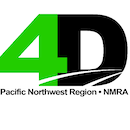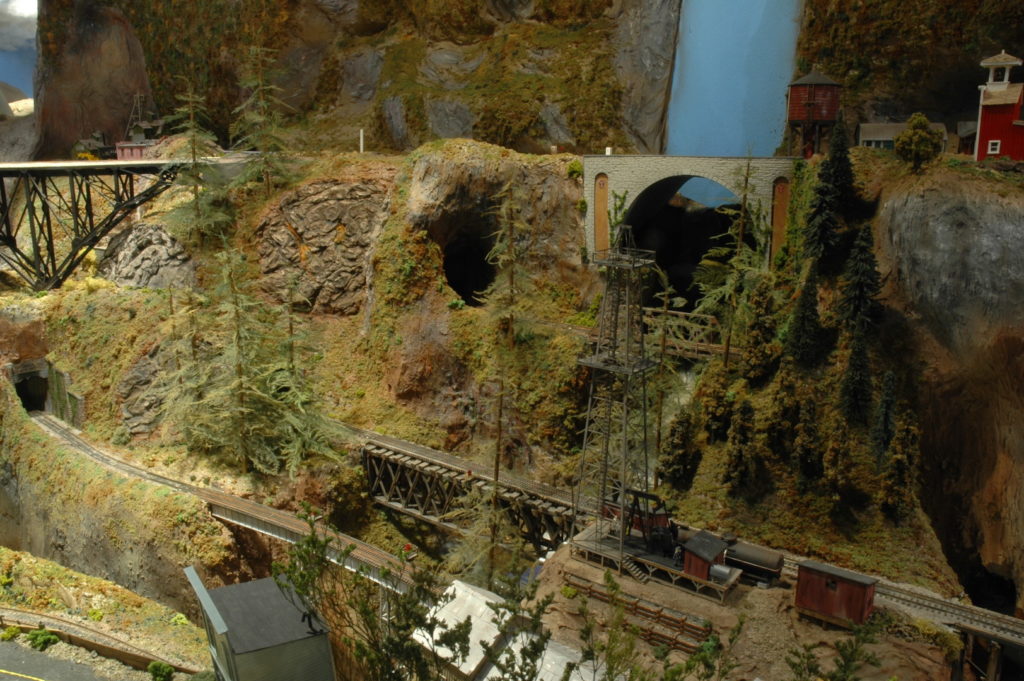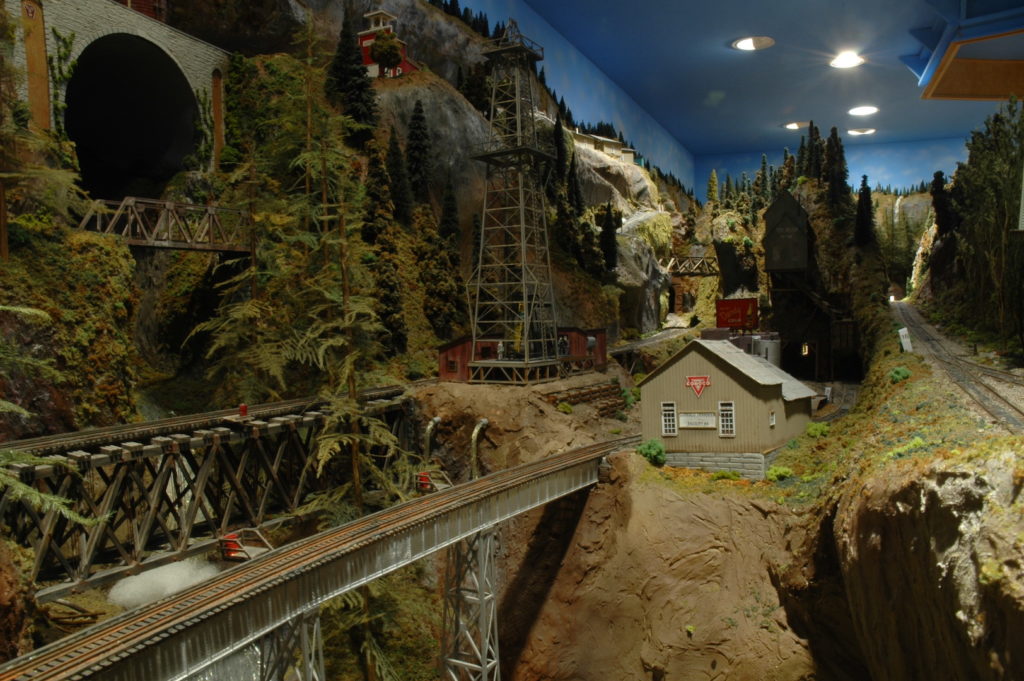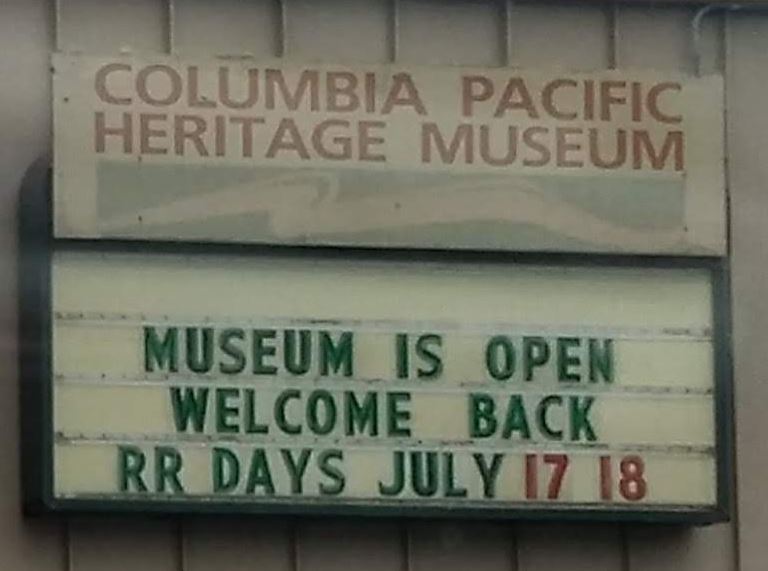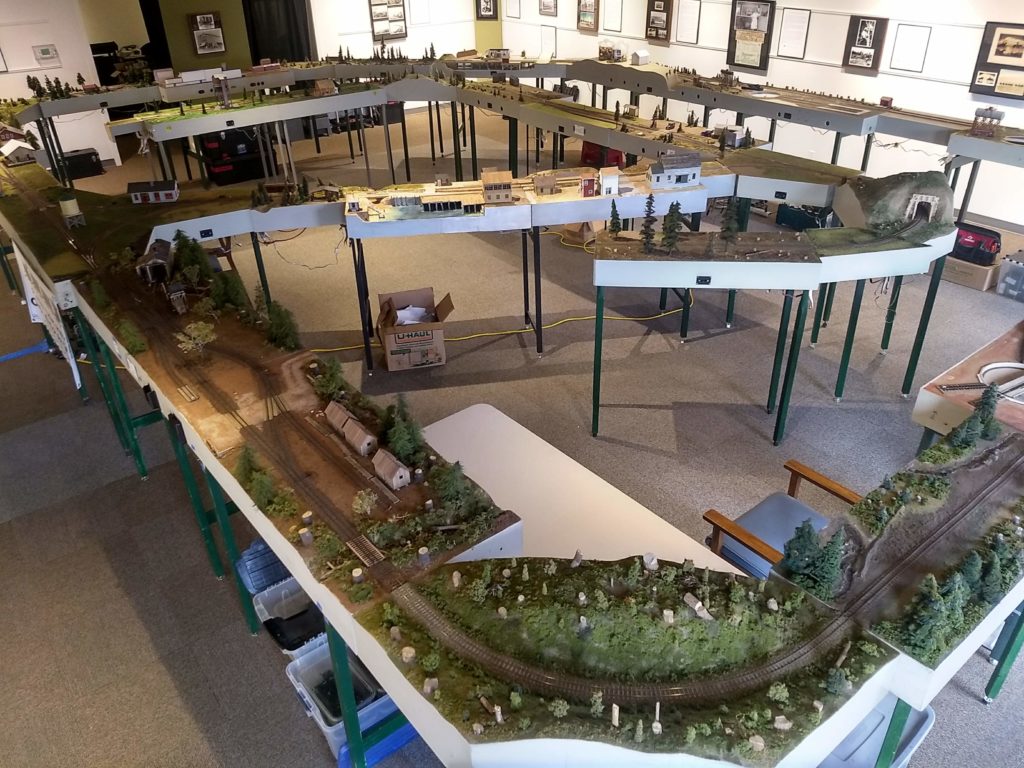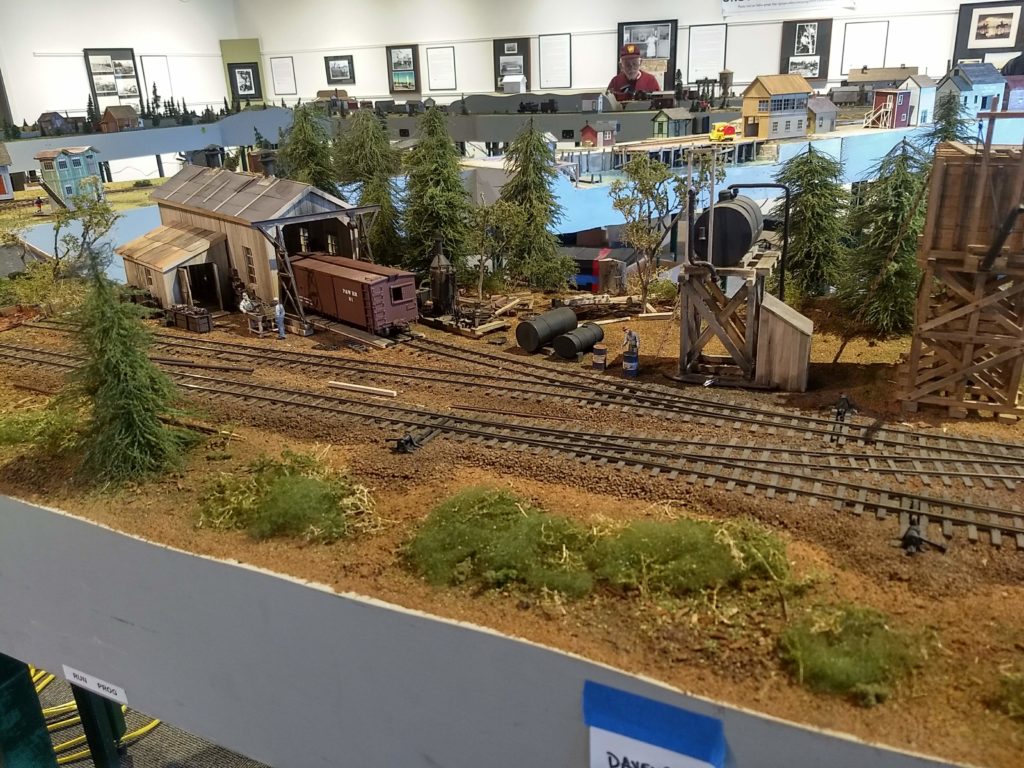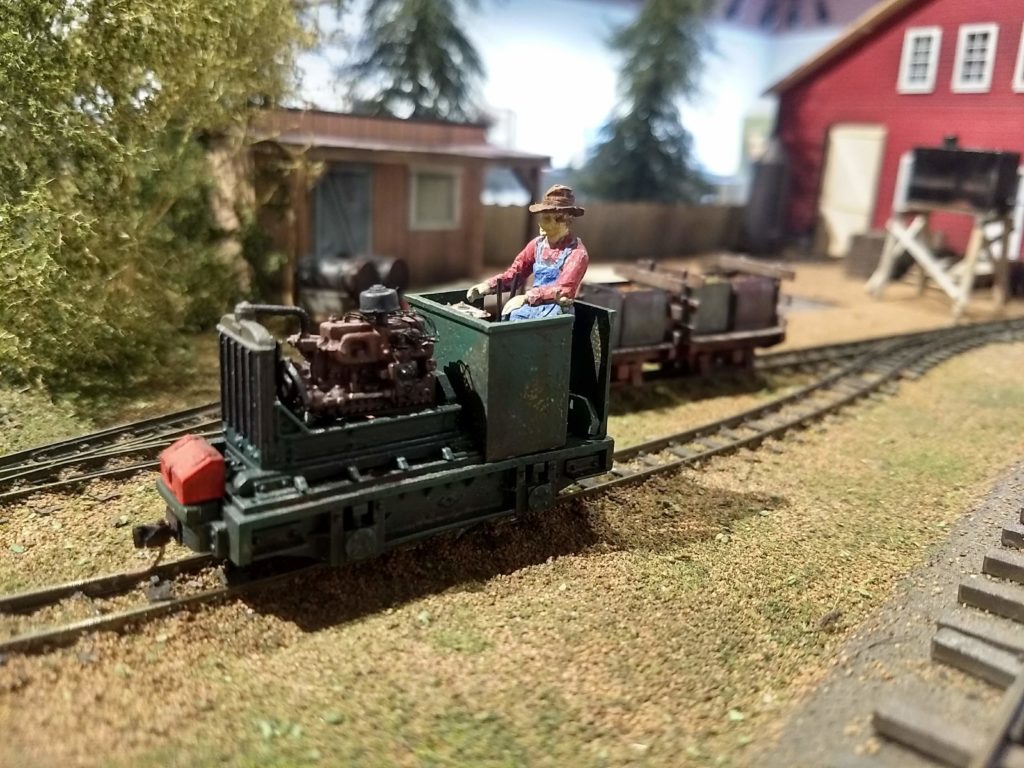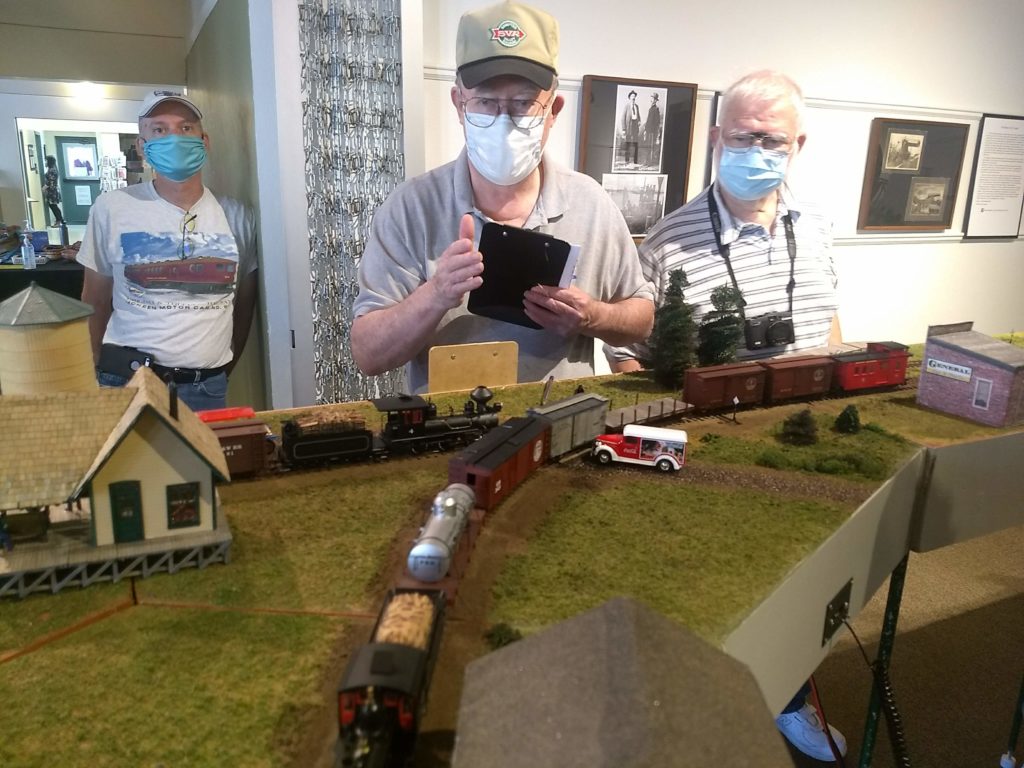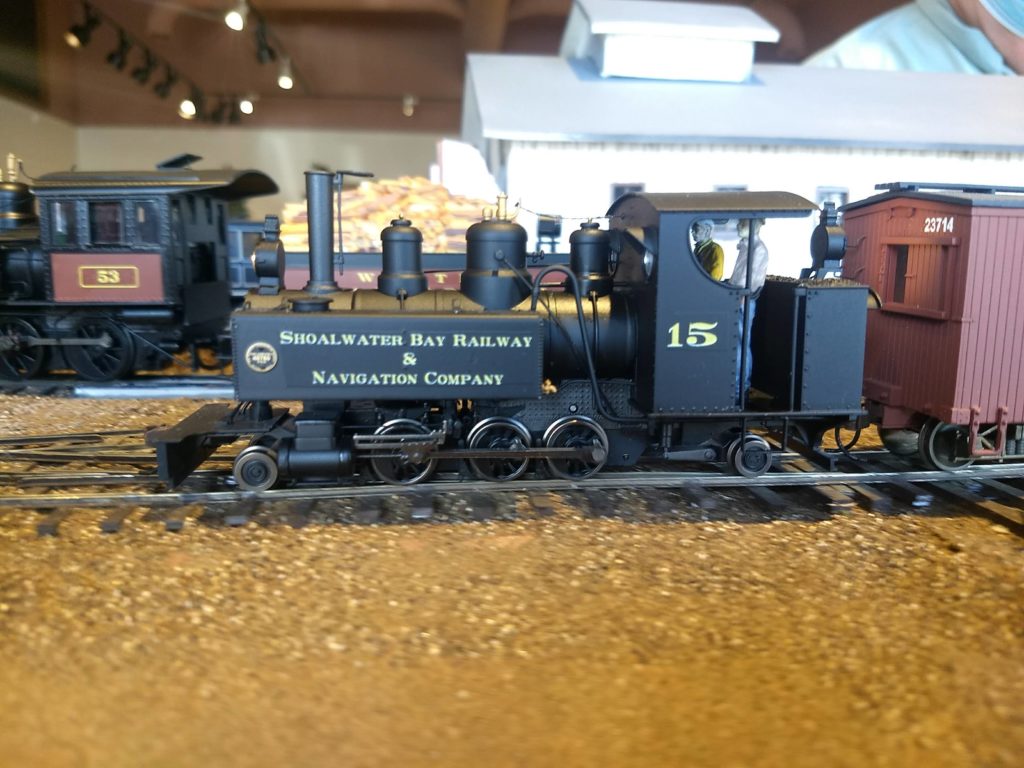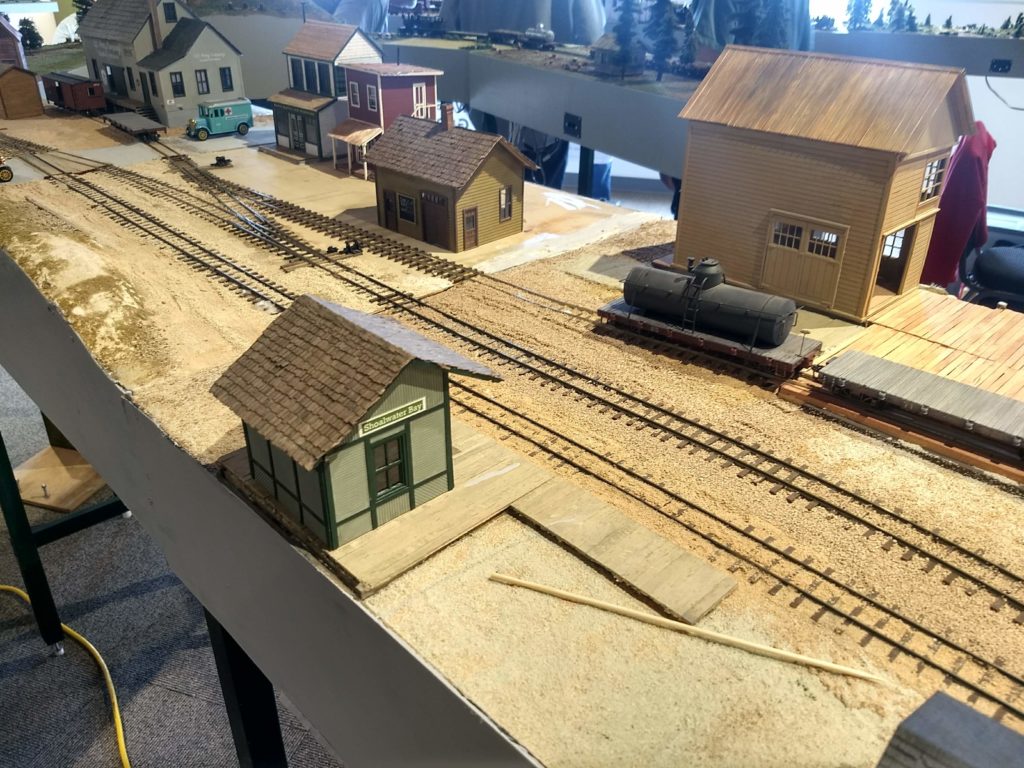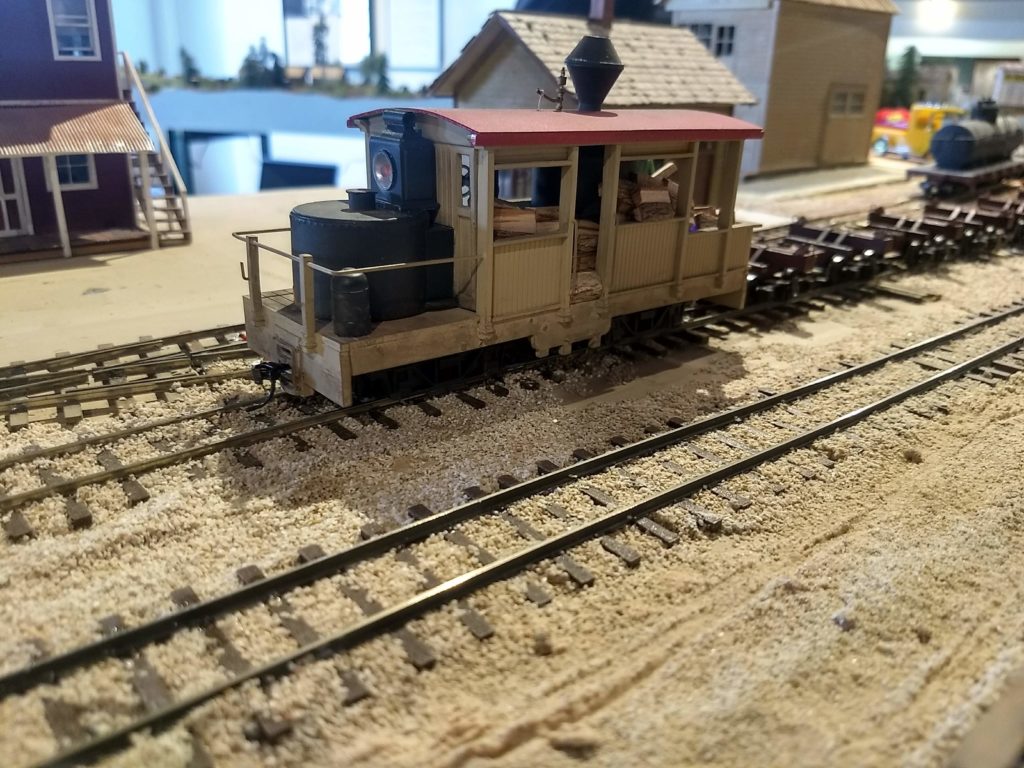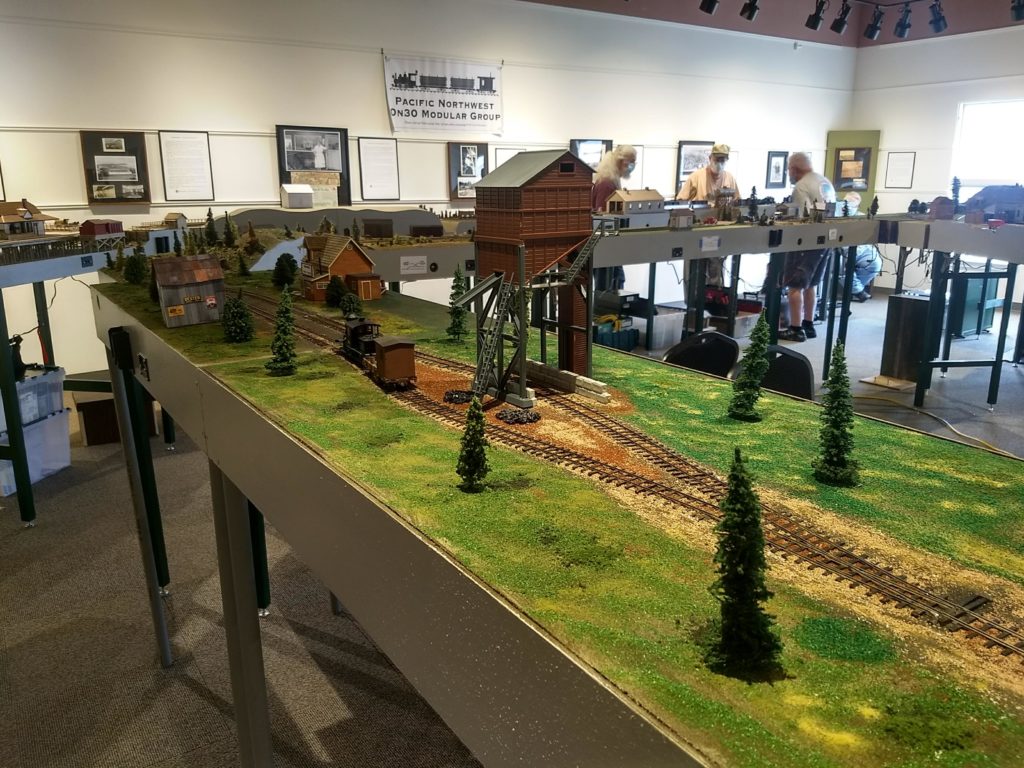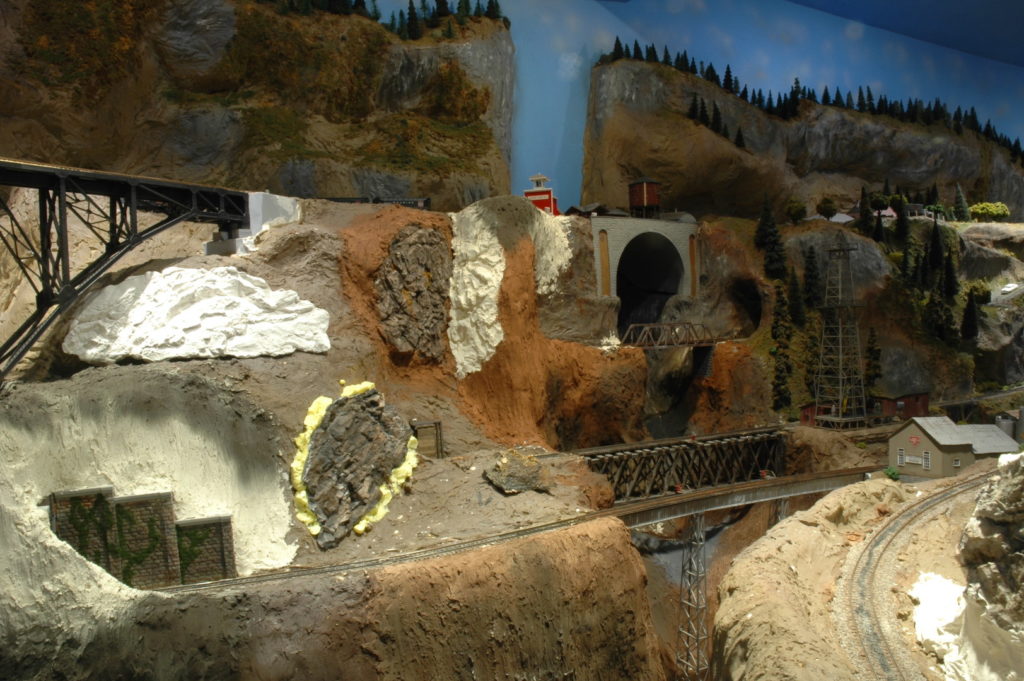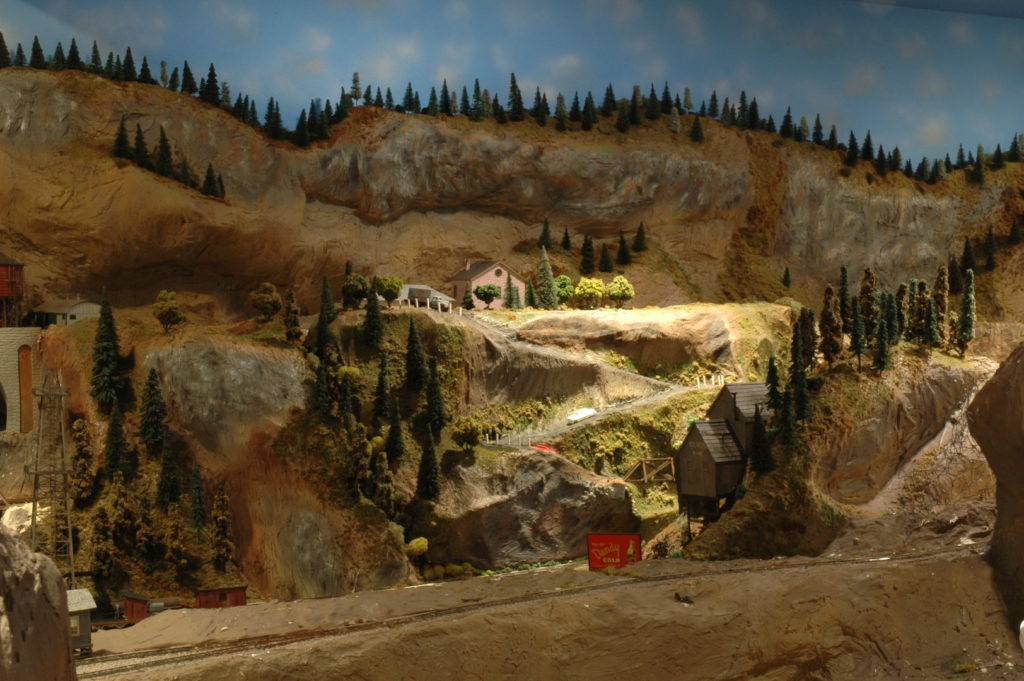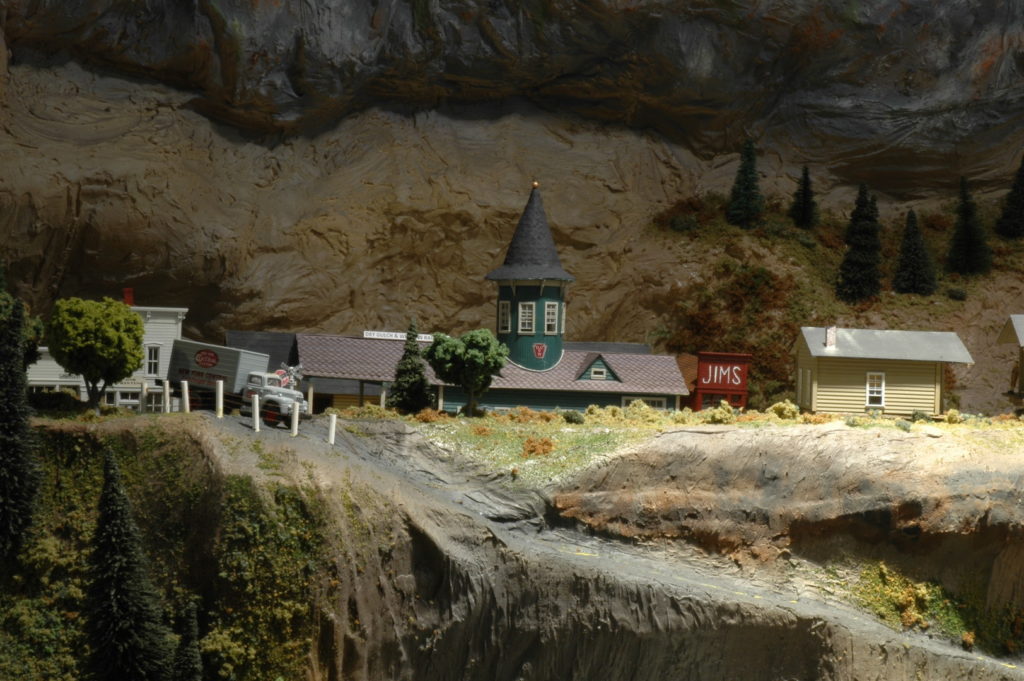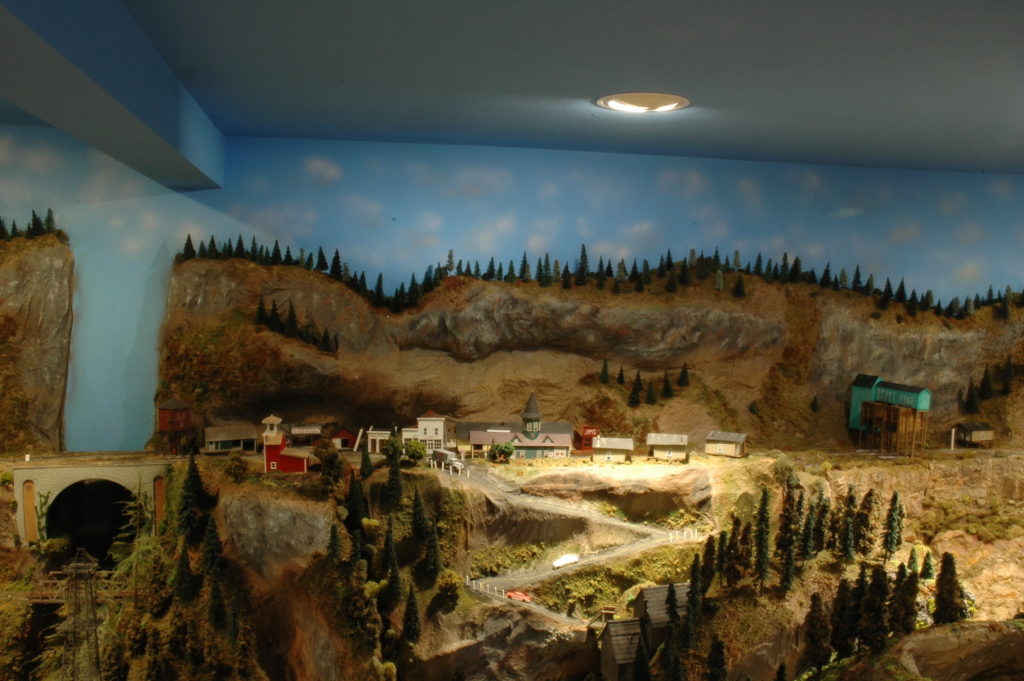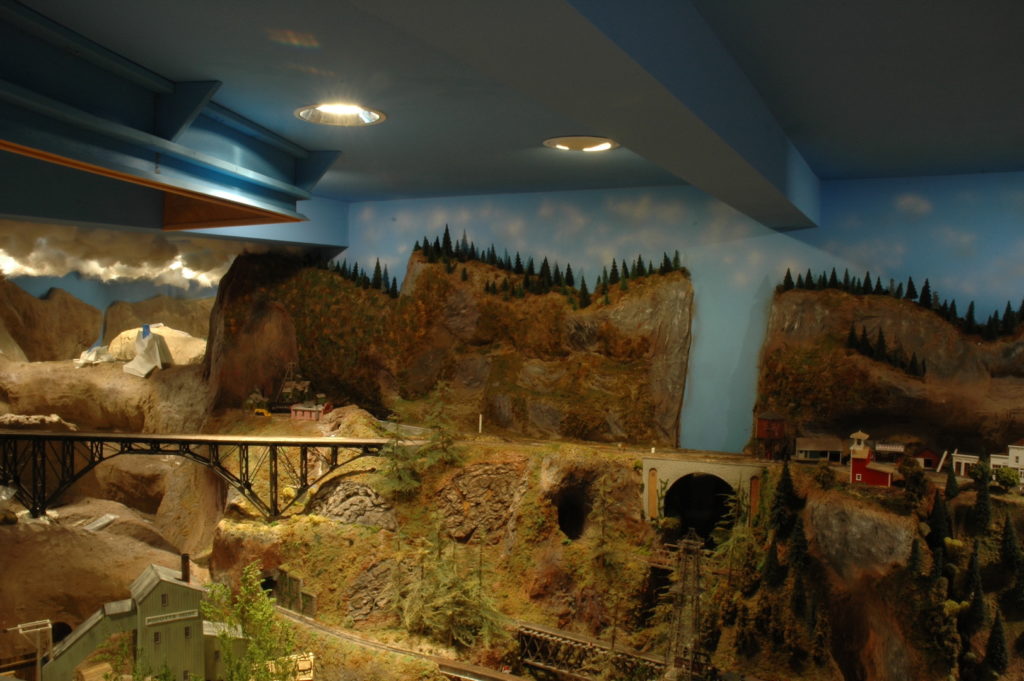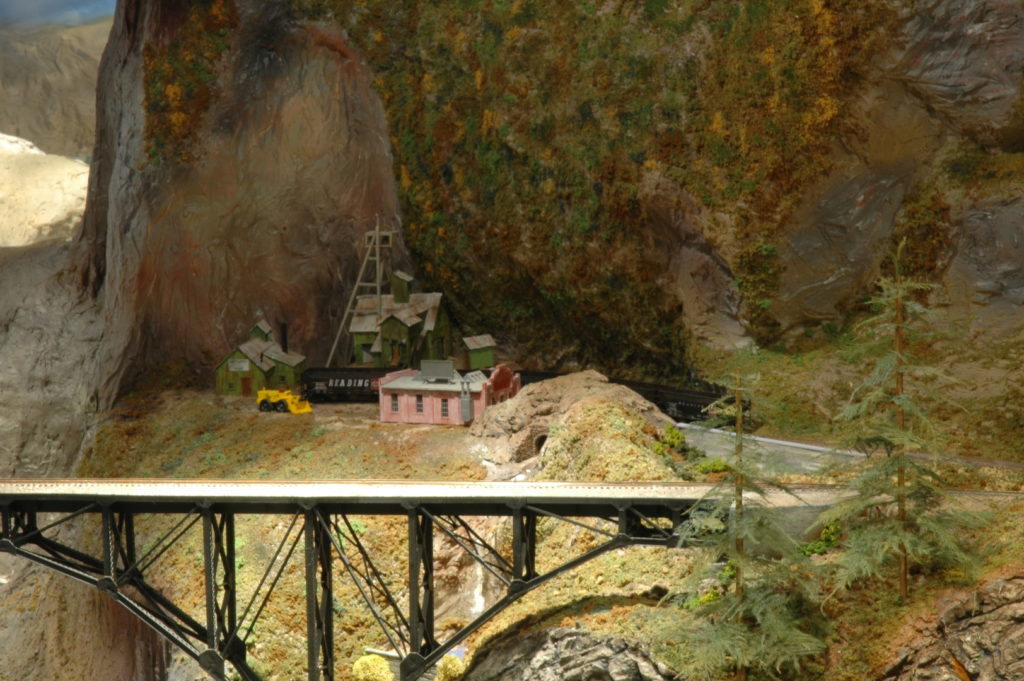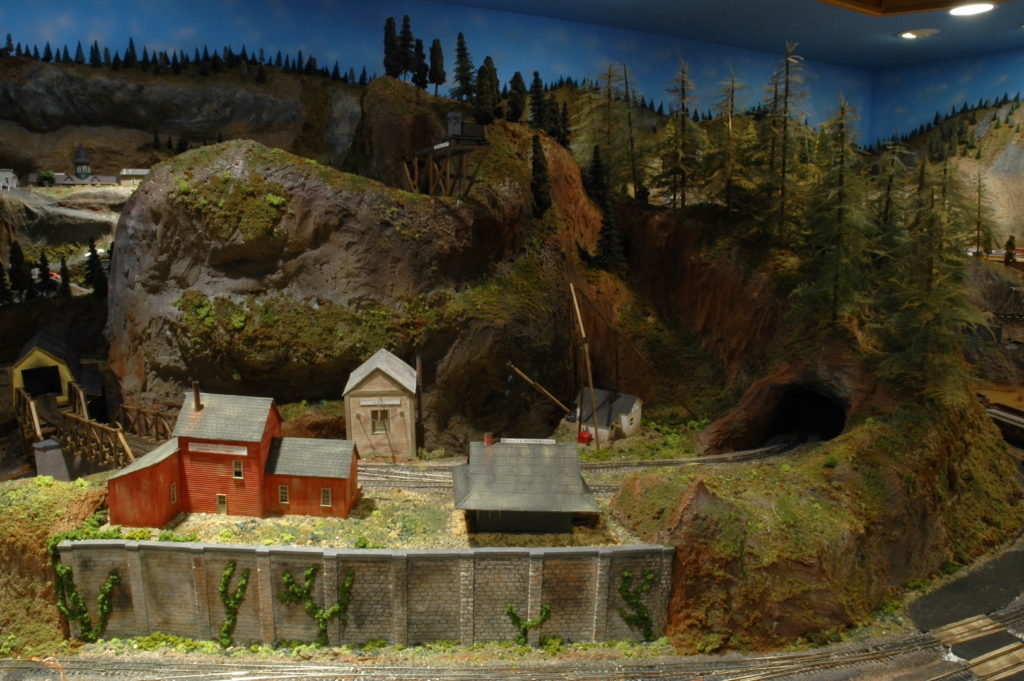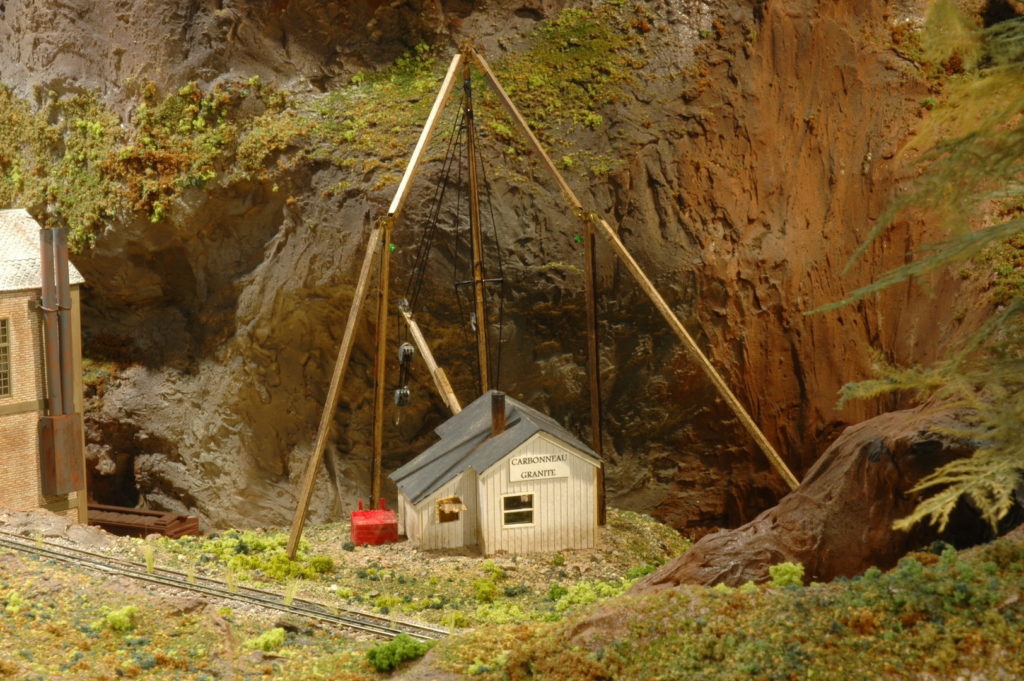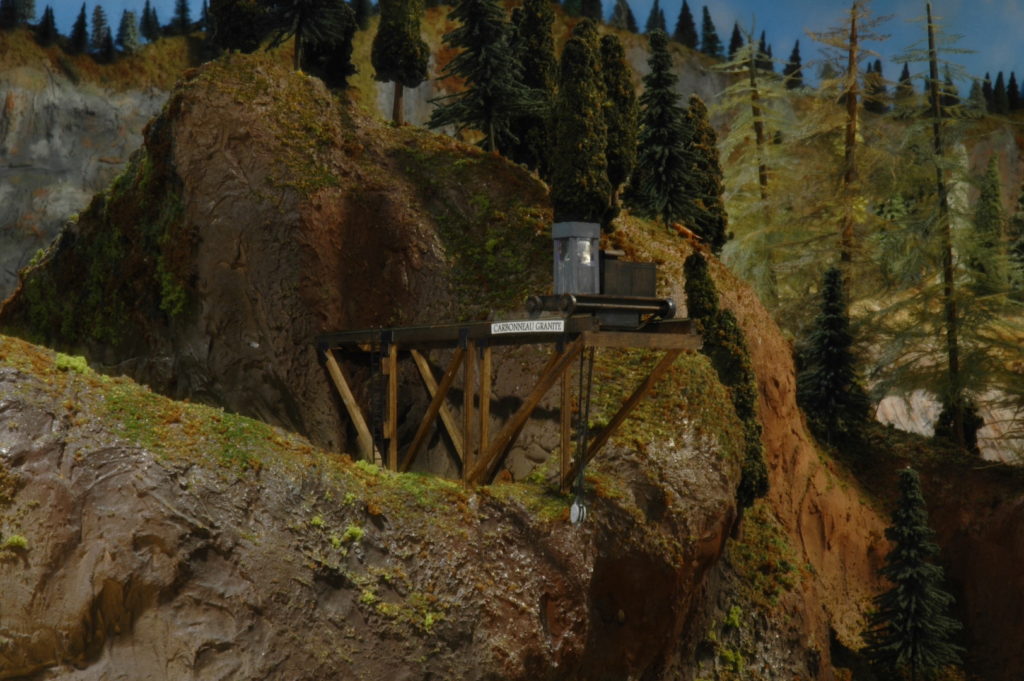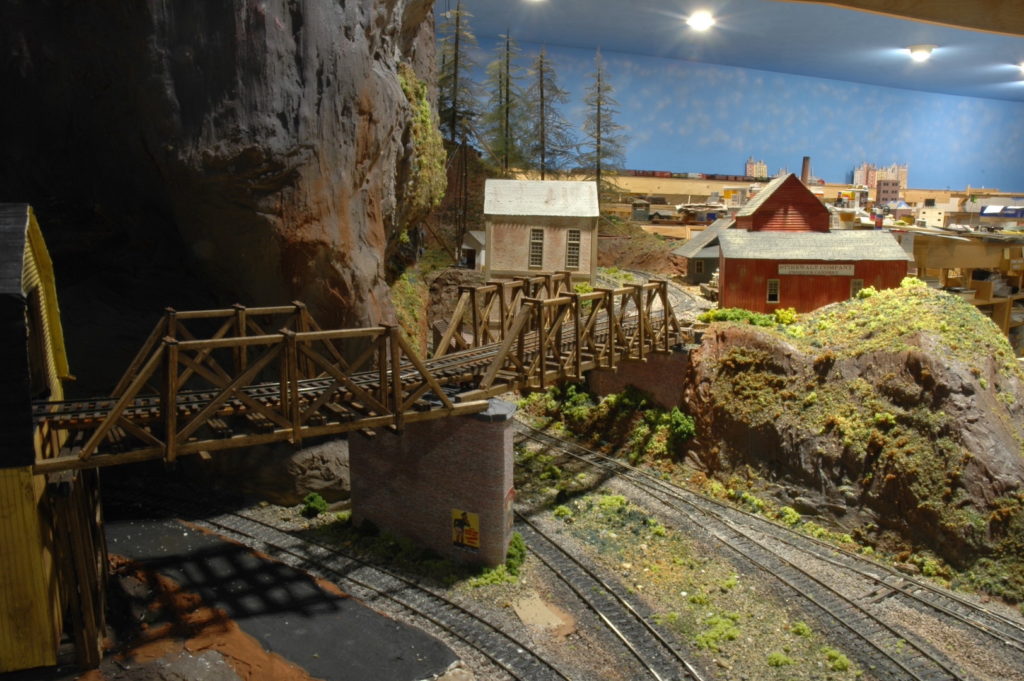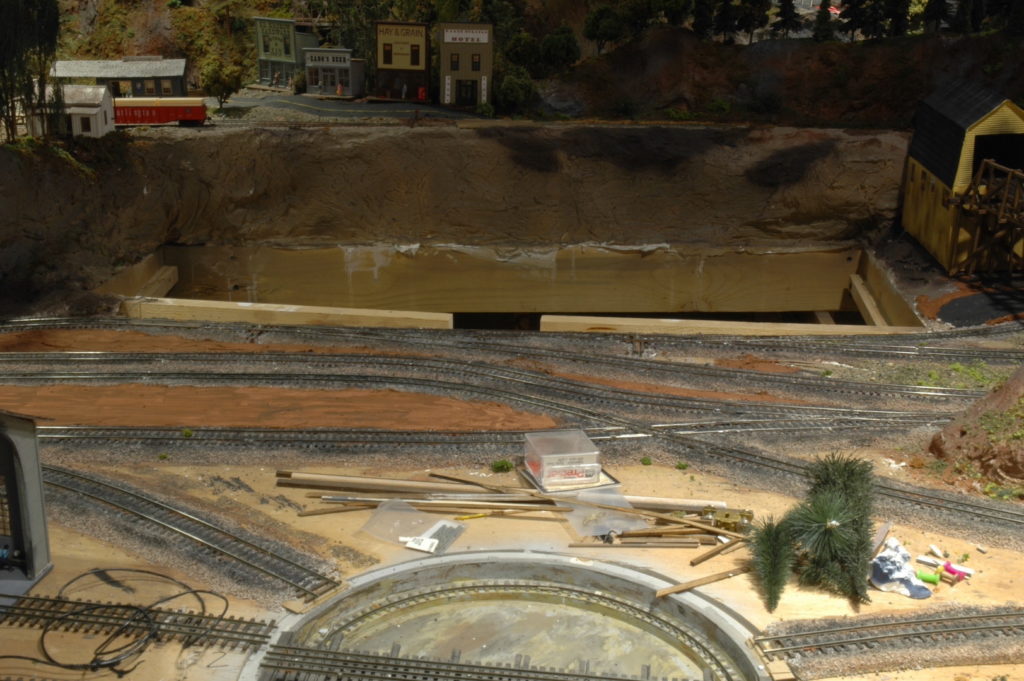By Dan Peters
In our latest Hi-Rail Group newsletter, Ed Ives complains that there hasn’t been any group railroading for 17 months, I’d like to report on my contrary experience.
Last winter, Ed advertised for volunteers to help restore the Lionel layout from the former Bellingham Club, which lost their location. They donated their Lionel layout to the Northwest Railway Museum in Snoqualmie. The layout suffered the expected damage and wear-and-tear from being dismantled and moved 4 or 5 counties away in the back of a semi.
Not having a whole lot going on during the epidemic stay-at-home routine, I went to several work parties ( at that time limited to 2 or 3 people, practically in haz-mat suits. ). I found the people at the Northwest Railway Museum to be congenial train nuts ( sound familiar? ). So after the Lionel layout was up and running I stayed on as a Museum volunteer.
Right around this time, late spring, the Museum staff combined with Mattel Toys ( owner of the “Thomas” franchise) decided to take a gamble that the epidemic was easing enough to resume their flagship “Day Out With Thomas” event, after a hiatus of 2 years. Work at the Museum shifted gears completely, to get ready for the resumed event. This is their major event of the year and their largest source of revenue ( comparable to our Pacific Science Center show ).
To take precautions with the on-going epidemic, ticket sales were limited to one-fourth capacity, and at-the-door tickets were eliminated. In keeping with Federal Railroad Administration ( FRA ) regulations, face masks are mandatory, even for vaccinated people, and “social distancing” is observed.
For this re-imagined event, activities were re-located from the Snoqualmie Depot to the “History Campus” about 2 or 3 miles East, where fully restored equipment is displayed indoors in a museum setting. The “back lot” was transformed into a 2 or 3 acre mini-theme-park, with kids’ activities, display booths, Thomas play tables, a band-shell, hay maze, building-block projects, and multiple photo opportunities ( including a live “Sir Topham Hatt” ).
The advantage of re-locating the kids’ activities to the “History Campus” is that it gives the visitors the feeling of having “a place to go” on their train ride. The tour starts at the Snoqualmie downtown depot. Next is a station stop at the “History Campus” for the kids and families to spend an hour at the activities and exhibits, followed by a return train ride to view the dramatic Snoqualmie Falls ( higher than Niagara Falls ) and back to the depot.
Hi-Rail group members ( along with many other museum volunteers ) joined in this family event, to run the Lionel Layout for the visitors, talk about Hi-Rail trains from the 40’s 50’s and 60’s, and Ooh and Aah with the kids at the model Thomas train.
Well, the good news is, the event was very successful, even with the challenges of re-starting the event after a 2-year pause. And since not all the “Heritage Railroads” that usually host the “Day Out With Thomas” event are ready to resume operation, Mattel and the Museum are able to schedule a third weekend, in September.
So, here’s your chance to get back to railroading.
Either model railroading, helping run the Lionel layout, or prototype railroading, as a crew member on the full-size passenger train.
The museum is looking for new volunteers, for a half-day shift or the whole weekend.
The third weekend of “Day Out With Thomas” is scheduled for Saturday and Sunday, September 11 and 12, 2021.
Parking is free, and lunch is provided to volunteers.
If this is something you want to do, or if you want more information, contact Volunteer Coordinator Emily Boersma at Emily@TrainMuseum.org ( 425-888-3030 x 7203 or 425-772-8870 ).
Tell ’em Thomas sent you.
